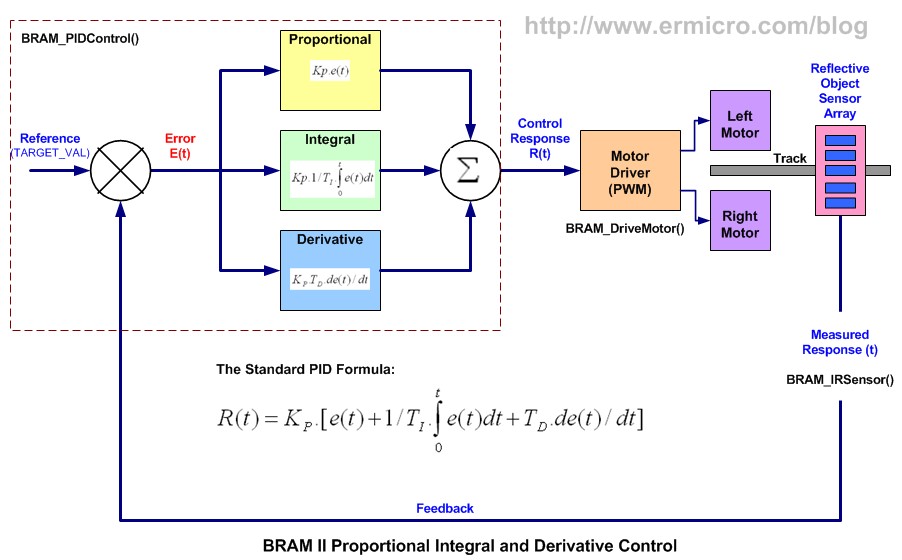

#pragma config(Motor, port2, myMotor, tmotorVex393_MC29, openLoop) #pragma config(Sensor, dgtl7, myQuad, sensorQuadEncoder) Typical Usage: //We will have a quadrature encoder for the PID controller to run off of and a This function performs one math step of the PID controller with val as the current position and returns its output. Int pos_PID_StepController(pos_PID *pid, const float val) This function performs one math step of the PID controller and returns its output. This function returns the last calculated output of the PID controller.

This function returns the current error in the PID controller. This function sets the target position of the PID controller. Void pos_PID_SetTargetPosition(pos_PID *pid, const int targetPos) For example, a lift would benefit from a kBias sufficient to keep the lift from lowering itself under the force of gravity. Parameter kBias can be used if the process in question has a constant load, in addition to a varying load. Parameter sensor can be of type tSensors (any analog or digital sensor), tMotor (a motor with an IME configured), or float*. This function initializes a PID controller. Void pos_PID_InitController(pos_PID *pid, const tSensors sensor, const float kP, const float kI, const float kD, const float kBias = 0.0, const int errorThreshold = 0, const int integralLimit = 1000000)

Otherwise, you can instead pass a pointer to a float, which will be treated as a sensor reading. If you are using an IME, you can directly pass the name of the motor with the IME to the PID controller. If you are using a regular sensor (any digital or analog sensor), you can directly pass the name of the sensor to the PID controller. Sensor input can be derived from any source. The Position PID module supports PID control in the position domain.


 0 kommentar(er)
0 kommentar(er)
